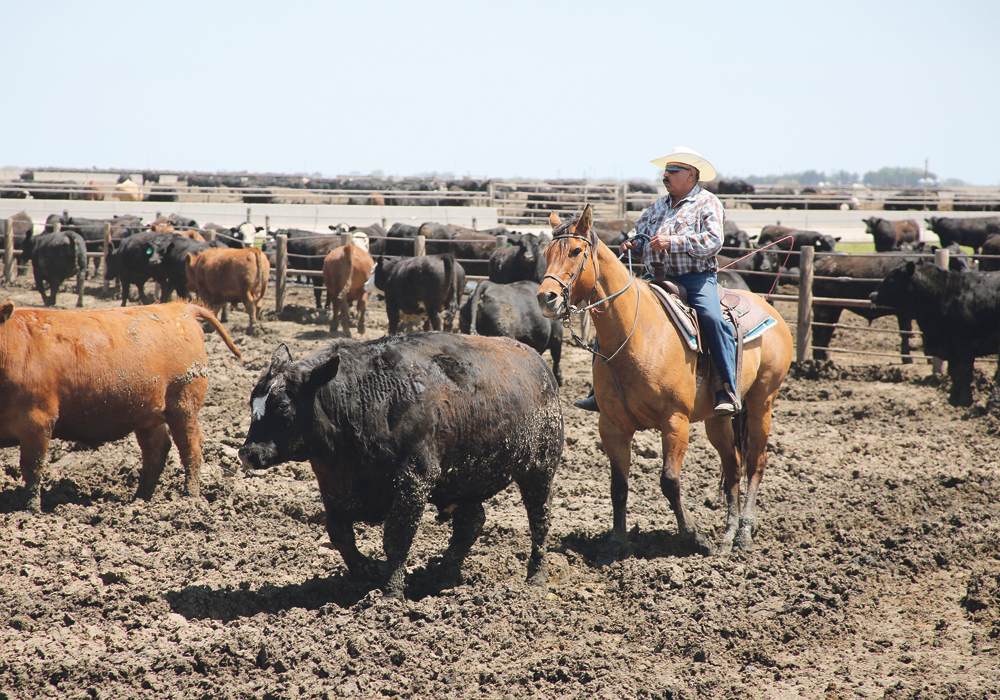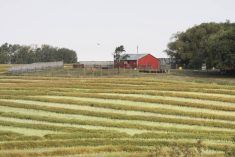Many U.S. farm owners ensure good conditions for their workers, but there are bad actors who don’t follow the rules
Young children have been found working on farms with their families in the United States, prompting advocates to push for changes to improve safety practices and labour standards.
Working children, primarily of families who have moved from Latin America to the United States, were recently documented by the Association of Farmworker Opportunity Programs (AFOP), an organization that aims to improve the quality of life for migrant and seasonal workers.
In its report, titled Children in the Fields, AFOP tells the stories of kids, ranging from ages seven to 16, who work throughout the summer, on weekends and sometimes after school.
Read Also

Nutritious pork packed with vitamins, essential minerals
Recipes for pork
Some of the children report they work to help their farm-worker parents and families earn more money, given they get paid more when harvesting more produce.
The working conditions for many of them can sometimes be hot, the work can be difficult and the hours long, and they can be exposed to pesticides, which advocates say negatively affects their health.
“They are exposed to many hazards, from tractor injuries, pesticides, heat and others,” said Melanie Forti, the health and safety programs director with AFOP.
“With our organization, we’re trying to make the laws stronger and help improve conditions so we see fewer of these cases.”
Forti explained there are many reasons why children end up working in fields.
She said parents might not make enough income to support their families, so they bring their children to help pick more produce.
There also might not be adequate child care on the farm or in nearby communities, limiting their options, especially on weekends, during the summer and after school.
“With the extra money, families were able to buy clothes and new notebooks for school. Otherwise, they might have to recycle ones from the year before,” Forti said. “It’s really challenging.”
Many farm owners offer good working conditions and ensure young children aren’t working, she said, but there have been some bad actors.
As well, farm owners might only know what’s happening with their employees through the contractor, she added. The contractor could know of poor working conditions but leave the owner in the dark.
“You see a bit of everything,” she said. “Many are doing it the way they learned it, but there can be a lack of knowledge because nobody taught them the regulations. Some know the regulations and don’t want to comply, and then there are ones who are on top of everything.”
Allison Crittenden, director of congressional relations with the American Farm Bureau Federation, which is the United States’ largest general farm organization, said young children working in fields is not the norm.
“You read the articles of horror stories (of young migrant children dying on farms), but that is the exception to the rule,” she said. “Those bad actors aren’t the people we are advocating for.”
But it isn’t just children in fields that are concerning advocates.
In some cases, Forti said, working and living conditions can be poor for migrant workers.
She said housing can be in disarray. They are sometimes living in cramped conditions and the home is falling apart.
There have also been cases of no stalls between toilets in bathrooms, which can be concerning for women who work on the farm, she added.
“There is a lack of privacy and other issues can come up with that.”
Many farmers offer good conditions, Forti said, but there are still others who don’t or are unaware that the conditions are bad.
“You have growers that are excellent, that they love their employees and treat them super well,” she said. “But then you have the ones who do the bare minimum.”
Athena Ramos, an assistant professor at the University of Nebraska Medical Center who largely deals with agricultural health and safety, has been working on a project that looks at the health and safety of migrant employees working in feedlots.
Ramos said preliminary results from the project show 60 percent of migrant feedlot workers report they do have health and safety training, but the training might not be consistent.
As well, she said 90 percent of workers participating in the project reported they anticipate an injury within the next 12 months.
“it’s concerning,” she said. “There tends to not be a consistent safety message. We haven’t defined what consistent means yet, but it means that safety messaging happens more than only once.
“One of the things we are trying to do is not only collect the data, but turn this work into relevant educational materials, with training and messaging that can help the workers.”
Ramos said English is a second language for most workers. Because training booklets and manuals are usually in English, it’s hard to know whether workers are truly learning the information.
She’s also noticed some migrant workers living in poor housing conditions.
“The conditions are pretty rough,” she said. “There can be four to six men who are sharing one dingy hotel room with only two beds. How do you make that work? That’s a challenge.”
Power differentials between the workers is also a barrier to ensuring conditions are good for everyone, she added.
For instance, she said, a 16-year-old worker would be considered lower on the totem pole in some scenarios. If that 16-year-old goes to buy food for himself, the older adults might guilt-trip him into giving them their food.
As well, workers with vehicles might charge others for a ride to a grocery store. Paying for the ride sometimes costs more than the food, Ramos said.
“It’s shameful we have people working in our food production industry but can’t feed themselves and their families,” she said.
Crittenden said it’s in the farmer’s best interest to have good working and living conditions for employees.
“Bad actors providing poor conditions aren’t your average farmer,” she said. “We don’t condone those people, and bad actors receive consequences for their actions.”
She said part of the American Farm Bureau Federation’s immigration and labour reform policy is for migrant workers to get some form of legal status.
Once they have legal status, she said, it’s more likely they will contact authorities if they are being treated unfairly or working in poor conditions.
“There are hotlines where they can report issues and their identities are protected. We want to make sure folks they are aware of that.”
But the approach currently taken by U.S. President Donald Trump’s administration to immigration is causing fear among migrants, Forti said.
Many workers travel from the southern to northern states as harvest progresses, but Forti said most are staying put because they don’t want to get deported, given some are undocumented.
They are also staying behind because they want a stable life for their children, she added.
“Parents want the best for their kids. They are staying back home so they don’t have to change from school to school.”
Forti and other advocates are pushing for the Children’s Act for Responsible Employment to be passed in Congress.
The act would raise the minimum age to 14 for children to work on farms. Currently, children as young as 12 are legally allowed to work on farms. Minors in other industries must be 14 before they are allowed to work.
As well, the minimum age for working with hazards would be increased to 18 from 16 under the act. Hazardous jobs include working with pesticides or chemicals; driving a tractor or operating other machinery; handling dynamite; or working near a manure pit.
The Government Accountability Office found that 237 children died between 2003 and 2016 while working on farms, concluding more than half of work-related deaths among children in the U.S. occur in agriculture.
Under the act, fines for employees who violate child labour laws would increase from $11,000 to $15,000 per employee.
“We need fair treatment, the law enforced and equitable wages,” Forti said. “You can have all the laws in the world, but if there is no one to enforce them, they are going to be broken.”


















